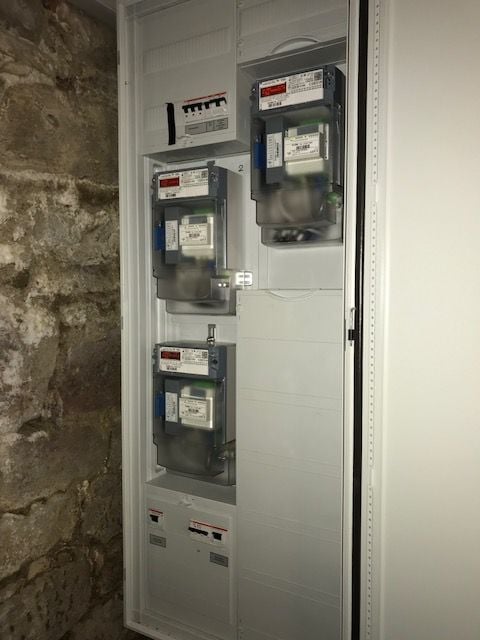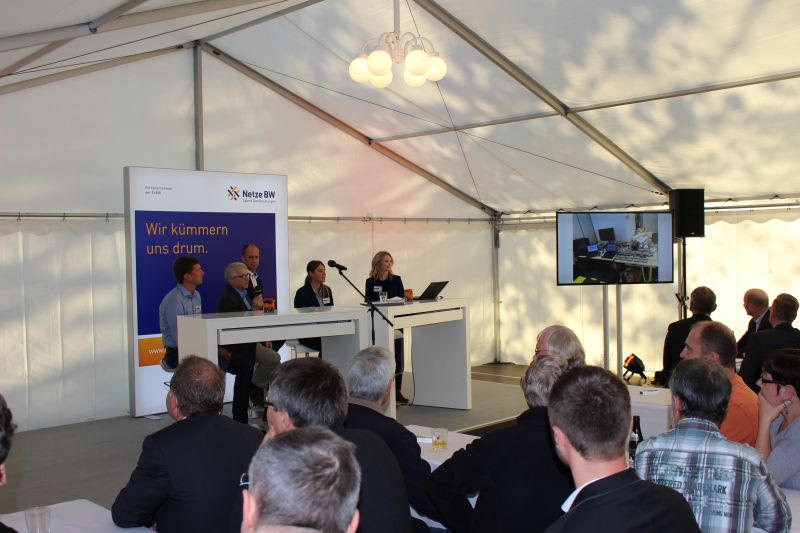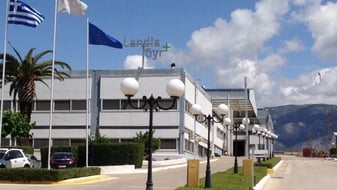 At first glance, Freiamt, a small town in Baden-Wuerttemberg close to the French border, seems an unlikely location for the next step in the future of energy distribution. But thanks to forward-thinking decisions made over 20 years ago and the work of a project team consisting of nine energy market players, including the local utility provider Netze BW and Landis+Gyr, big things are happening.
At first glance, Freiamt, a small town in Baden-Wuerttemberg close to the French border, seems an unlikely location for the next step in the future of energy distribution. But thanks to forward-thinking decisions made over 20 years ago and the work of a project team consisting of nine energy market players, including the local utility provider Netze BW and Landis+Gyr, big things are happening.
Long before the transition to renewable energy sources was a hot topic, Freiamt was an early adopter of alternative sources of energy, and installed some of the first wind turbines in Germany in the 80s and 90s. Today, with a combination of wind power, biogas and solar generators, the power generation is almost four times higher than the consumption. This concentration and diversity of renewable energy sources was one of the key factors in the decision to use Freiamt as the test location for the “grid-control” project, started in 2015 by Netze BW with eight partners, including Landis+Gyr, and with significant financial support from the Federal Ministry of Economics.

The Landis+Gyr meters installation by Netze BW in Freiamt
The goal of the project is to design and test a smart power grid that will be able to respond to the challenges of the future. The new grid infrastructure will provide intelligent coordination between different generation facilities and all the parties involved in energy supply chain, such as network operators, prosumers and retailers. With the growing complexity of a modern grid, each of these parties plays a different role in the energy production and distribution chain. The concepts and solutions developed in the “grid-control” project will allow to integrate each party according to its needs. One part of this is responding to fluctuations on the production side: when individual generators such as Photovoltaics (PV) units are temporally not producing, this shortfall must be compensated to ensure that sufficient energy is supplied to meet consumers’ demands. On the other hand, it is inevitable that changes in consumers’ lifestyles will influence the demand side too. One example of this is the push for electric vehicles. The German government have committed to an ambitious goal of having over one million electric vehicles (EV) on the road by 2020, and further into the future this number is projected to increase. This is an entirely new challenge for utility management, as the large number of EVs connected to the grid might significantly stress the energy networks. However, the “grid-control” project has been designed to answer this challenge.
“We need new intelligent technology to ensure secure, environmentally friendly and long-term electricity supply,” says Helmfried Meinel, Minister-Director at the Baden-Wuerttemberg Ministry for the Environment, Climate and the Energy Industry. “The conditions in Freiamt are ideal for developing the energy grid of the future. The Netze BW project will allow us to achieve our goal of making Baden-Wuerttemberg a leading region in the field of intelligent electricity grids.”
 Presentation of the Landis+Gyr solution setup in the "grid-control" project
Presentation of the Landis+Gyr solution setup in the "grid-control" project
The project recently passed an important milestone, as 2017 saw the end of the design and testing phase and the start of the ambitious field test, in the tranquil surroundings of Freiamt. Technicians have been hard at work over the past months installing the Landis+Gyr technology that make up the front end of the system: around 100 E750 Sym2 meters, supported by S750-GCUs (grid control units). These products were specially developed in collaboration with Netze BW to manage a whole variety of field devices. Around thirty network nodes (secondary substations, private homes and farming businesses) will use the new control and communication technology to manage ca. 700 kW of PV systems, BEMS (building energy management systems) and BESS (battery energy storage systems). The local network includes 4 battery storage installations with a capacity of 9 kWh to 120 kWh, a controllable distribution transformer and one double charging station for electric vehicles.
Landis+Gyr’s metering devices have been installed at various nodes of the solution infrastructure, measuring electricity every second and pushing the data to the Regional Energy Management System (REMS) every minute. In case of voltage fluctuation when the critical voltage levels are exceeded, the REMS system control is activated. In this project, voltage control is implemented centrally due to a centralized system setup.
Additional use cases include capacity management and power balancing. Based on the information provided by the Landis+Gyr meters constantly monitoring and controlling the grid, the REMS system can automatically resolve grid congestion by reducing load or generation, activating battery storage, etc. The REMS system also enables a power flow control at a predefined point in the grid such as an HV/MV substation.
To be able to operate this complex solution infrastructure, Netze BW has applied a so called “traffic light concept”. The green light indicates that no congestion is predicted, while the yellow light is a sign of a potential bottleneck in the grid that might require certain restrictive measures by the market players. For example, a Virtual Power Plant operator would adjust the operating mode of its storage and generation assets to avoid predicted transformer overload. However, despite these actions taken during the yellow phase, the actual technical limits of the electricity network might still be violated in real time due to unforeseen events. In this case, the red light would call for immediate mitigation measures enabled automatically by the REMS system.
“We’re very pleased to support our long-term customer and partner Netze BW in their efforts to explore the vast possibilities of leading-edge smart grid technology in building a fully controlled and flexible grid infrastructure of the future”, says Ralph Griewing, SVP Energy Solutions at Landis+Gyr.
The test phase is planned to run until mid-summer 2018, collecting valuable data for the next step in developing the future-proof power grid.





